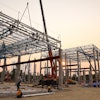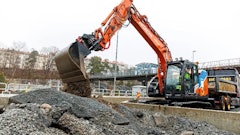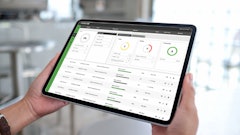
The push to move America’s power grid underground has gained momentum with a U.S. Department of Energy (DOE) program that’s exploring how to underground medium-voltage power lines in a way that’s safe, efficient and cost-effective.
One of the key projects that’s underway in this program seeks to identify how ground penetrating radar (GPR) can be used to identify underground networks to avoid cross-bore events during the installation of underground power lines. These events can be costly and dangerous, but GPR can help prevent them by locating any type of utility conduit or piping.
With the DOE program potentially changing the course for how America’s power lines are deployed and maintained, let’s delve into what GPR technology is and how it could help make this ambitious energy transformation possible.
GPR’s Proven History
GPR devices send radar pulses into the ground that then bounce back echoes of objects in the ground. This technology has proven to be valuable in a wide range of applications, from helping scientists explore the surface of Mars to protecting military personnel by detecting hidden explosive devices.
In underground construction, contractors and utility subsurface engineering companies commonly use GPR devices to locate and create high-resolution scans of buried utilities. Standard utility locating devices excel at pinpointing the location of utilities with metallic conductors, but they fall short when it comes to non-metallic utilities like PVC water pipes or lines without tracer wires.
GPR fills this gap by locating the otherwise unlocatable utilities. This helps users better understand the complex network of utilities, enabling them to plan projects more confidently. GPR enhances jobsite safety by corroborating third-party locates and identifying non-utility obstacles such as voids, sinkholes, concrete structures and underground storage tanks.
Before using GPR, it’s important to understand how varying ground conditions can impact its performance. For example, high moisture content in soil or grass can lessen the device’s signal. Conversely, in optimal conditions, ground penetrating radar, when paired with RTK capabilities, allows users to get centimeter-grade accuracy.
Technology Advances Bring Efficiencies
GPR devices continue to evolve to improve their ease of use and help locators work more efficiently. Now, the technology is poised to help teams be productive and minimize downtime as they embark on the immense task of moving a significant number of existing power lines underground.
For example, some GPR devices use synchronized dual-frequency antennas. This allows users to identify both shallow and deep underground utilities in one pass rather than needing to make multiple passes on different frequencies. Enhancements like an “assisted grid” capability also allows locators to digitally map their location, significantly reducing the time required for site analysis and increasing overall efficiency.
GPS integration is another feature that can help contractors work more efficiently and accurately. It allows users to view their path and markings in real-time. Additionally, users can download and incorporate web-based maps like Google Earth into their GPR device images, providing a comprehensive and detailed view of the surveyed area.
GPR devices have also evolved to address the varying conditions encountered at different jobsites. For example, an Earth-engaged antenna can deliver better contact on uneven ground, helping to reduce signal loss. And, a one-touch recalibration button allows users to quickly switch from one scanning surface to another, enhancing operational efficiency.
Even considerations for the transportation and storage of GPR devices have been optimized. Much like many lawnmowers, a GPR device can be folded into a compact size, making it easy to transport from jobsite to jobsite. This portability ensures that contractors can efficiently move their equipment without hassle, further streamlining the workflow.
A Clearer Path to Change
Moving power lines underground can protect them from severe weather and help reduce power disruptions for people and businesses. However, this work must be done carefully to mitigate the risk of any damage to the 20 million miles of utilities in America that already run underground today. And it must be done efficiently to keep the cost of this major undertaking at a minimum.
GPR can support both goals. As a complement to standard utility locating devices, this technology can reveal the utilities and other underground obstacles that traditional utility locating devices can miss. This capability ensures a more comprehensive understanding of the subsurface environment, reducing the risk of damaging existing infrastructure.
Furthermore, GPR can help ease the jobs of contractors and keep them productive. By providing accurate and detailed information about underground conditions, GPR enables contractors to work more efficiently and safely. This not only aids in the successful relocation of power lines but also contributes to the transformation of our power grid.

















